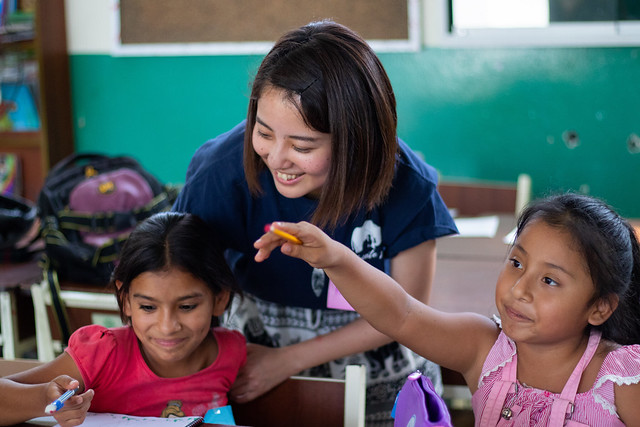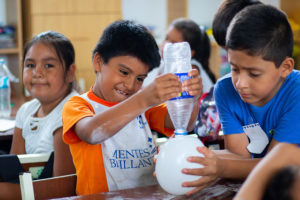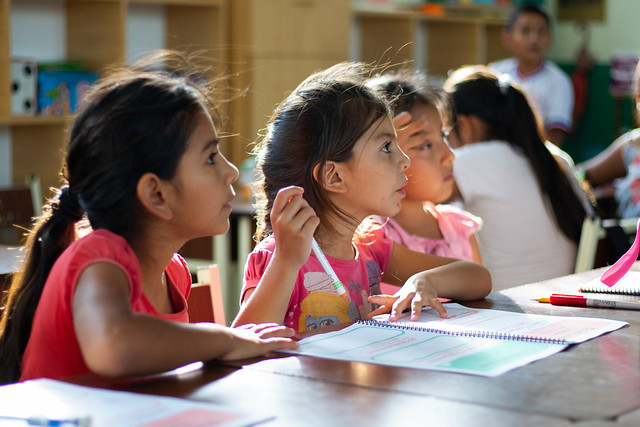JICUF Grantee Highlight: Education Program in Peru

In fall 2018, fourth-year student at ICU Kazuna Yamamoto (CLA ‘19) received ¥510,000 through the JICUF Student Funds Initiative for her project, “Educate For ICU Ambassador Program.” This past March, Kazuna brought 4 ICU students and 2 non-ICU students to organize, conduct, and facilitate educational STEM and English workshops in 3 schools in Trujillo, Peru. JICUF funding covered airfare, accommodation and project materials. The project objective is to motivate ICU students to learn and use Spanish they learn at ICU while also building their project managing skills through working and engaging with children in workshops. We asked Kazuna to tell us about her time in Peru.
——————
Using the funding received from the Japan ICU Foundation, we were able to conduct two projects in Trujillo, Peru for our NGO, Educate For, led by Youth Ambassadors representing ICU. This organization is an international NGO that I built during my third year in university, during my year abroad in Chile. With a strong passion for education and service, I built Educate For from scratch to create an organization where both students and adults can collaborate across national borders. Through this project in Peru, we worked with a total of 70 students in a school in Trujillo called Colegio Pampas de Valdivia during the entire month of March. Our projects were focused on two subjects, English and STEM (Science, Technology, Engineering and Mathematics.)

It is one’s right to live in a sustainable society that assures its citizens’ freedom, health, and equality. In order to realize such a society, skills which can be developed through STEM fields such as critical thinking, complex problem solving skills, and making informed decisions are necessary for the younger generation. However, Latin American countries are behind in the STEM field, especially Peru. According to the Program for International Student Assessment (PISA) in 2012, Peruvian students ranked last among 65 participating countries, in both math and natural science. Similarly, a report from the Second Regional Comparative and Explanatory Study (SERCE) indicates that Peruvian students scored below the regional average (UNESCO, 2008). In third grade mathematics, more than half of the student population reached only the two lowest achievement levels out of five. The SERCE also figured an enormous gap between students living in the countryside versus the city. The urban students’ average test scores were three times higher than rural students’. This suggests that there is a huge inequality in STEM education in Peru.

The STEM Project ran for three weeks in March, performing different experiments in the area of the four STEM subjects. Our main focus was to increase Peruvian students’ interest in STEM subjects. The project was conducted after school, but students came with more energy, some wanting to not even go home to eat lunch. The English Project was conducted during school hours and on Saturday mornings, with 32 sixth grade students. The Ambassadors created textbooks, lesson plans, and project evaluation methods by themselves.
Throughout this trip, the main focus was for ICU students and our Educate For Youth Ambassadors to learn project management and incubation, and to collaborate with people from other cultures and backgrounds. Having a huge barrier which was language, the Youth Ambassadors had worked hard to communicate with our Educate For Peru team in order to successfully launch our two projects, STEM and “English For Everyone.” The Youth Ambassadors spent time before and during this project learning Spanish. I taught Spanish to them and English to our Peruvian team. The struggles to create a project allowed some students to find new interests but also what they were not interested in.
Creating a project in a foreign land is as difficult as starting a company, and I believe it is one form of studying entrepreneurship. Although there were struggles, I am very glad this project ended successfully, since the process and the findings throughout this project were more significant than the outcome for the Youth Ambassadors and myself. Some Youth Ambassadors found it very interesting to learn Spanish and find new motivation to continue learning Spanish, while others found out where their comfort zone was—in Japan. Some of the students told me that they now have motivation to work with children or in education and are building their own projects.
Our “English For Everyone” project still continues, as our Educate For Peru team is working every Saturday afternoon to deliver English education to the Peruvian students of Pampas de Valdivia.





